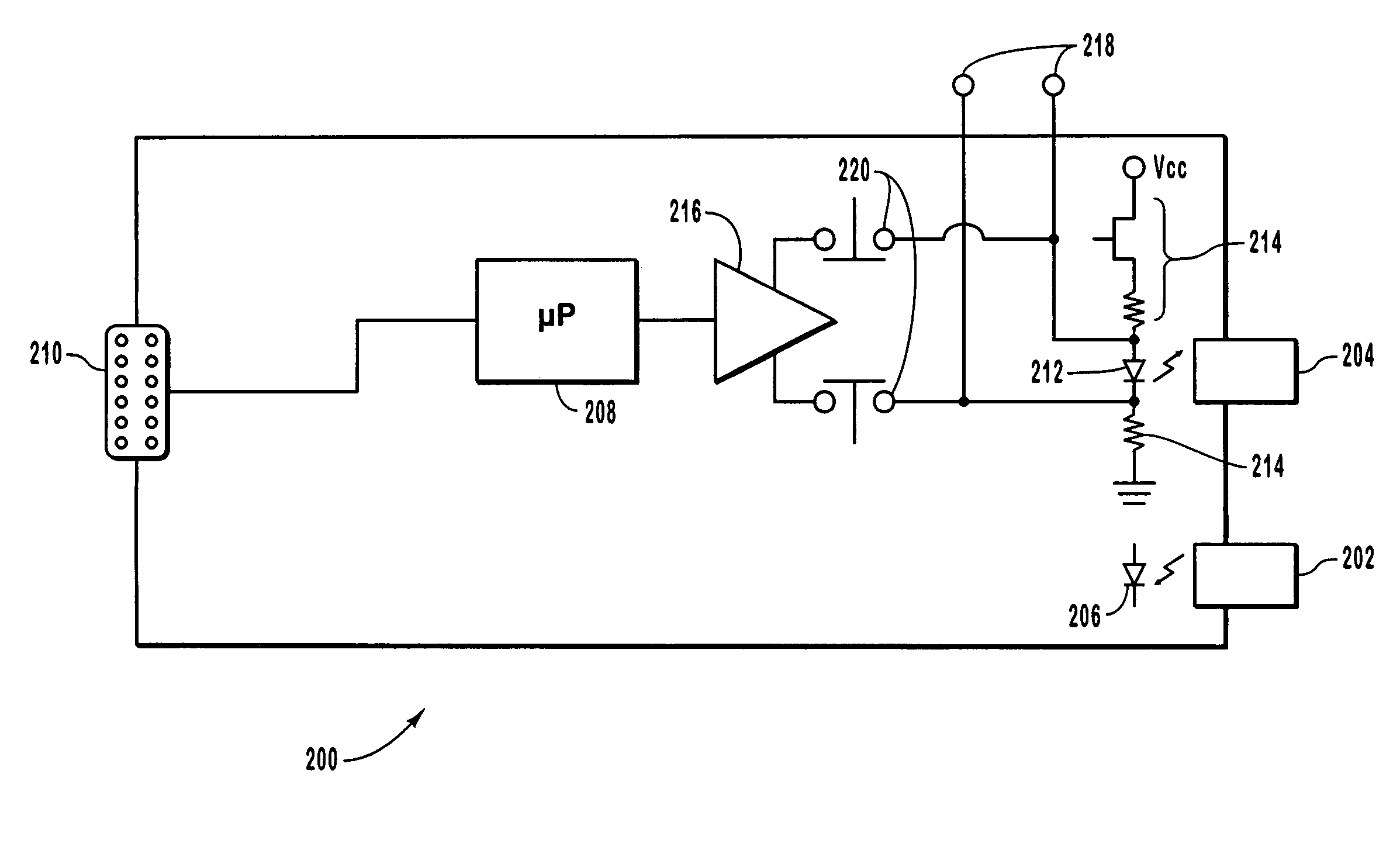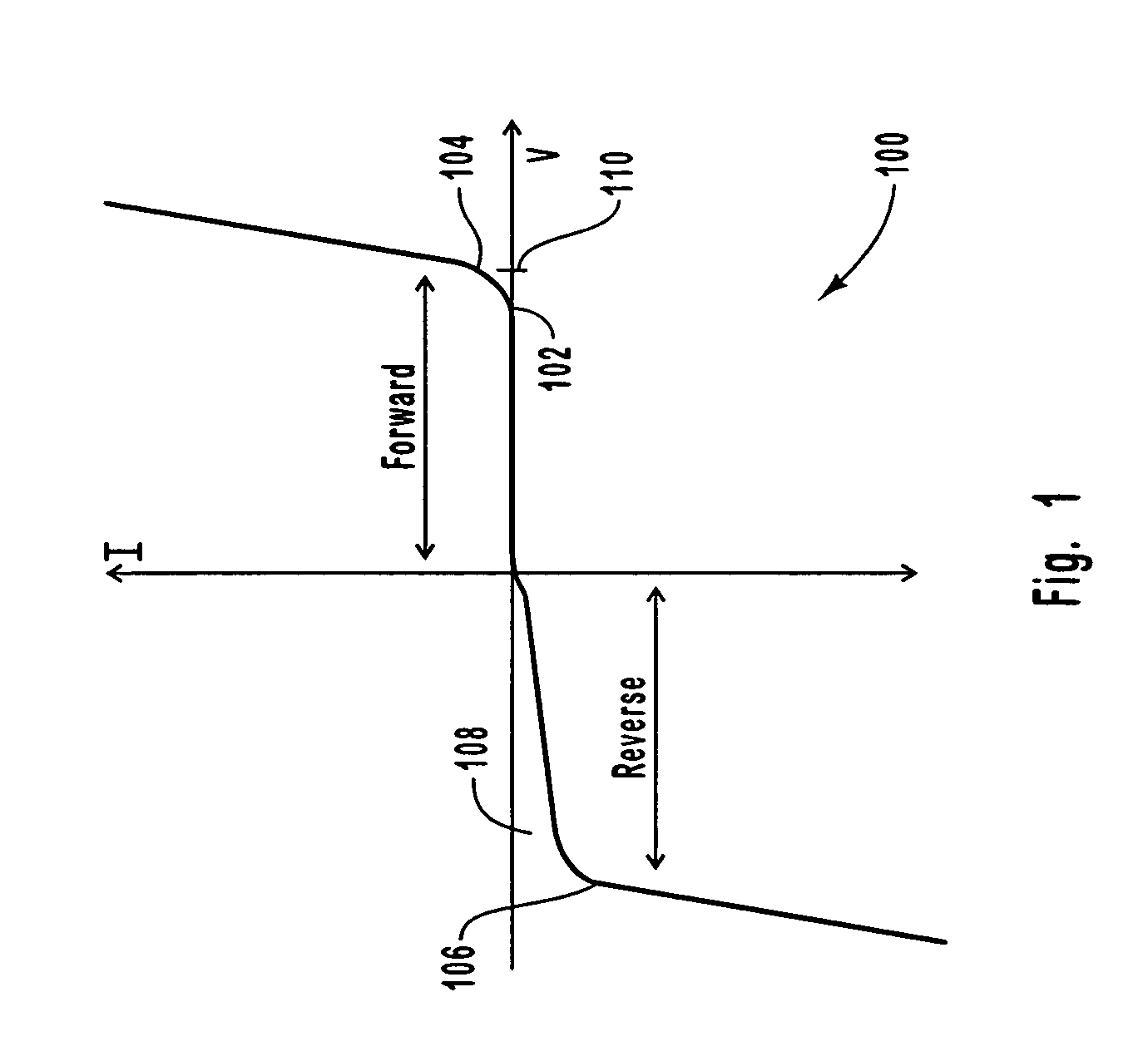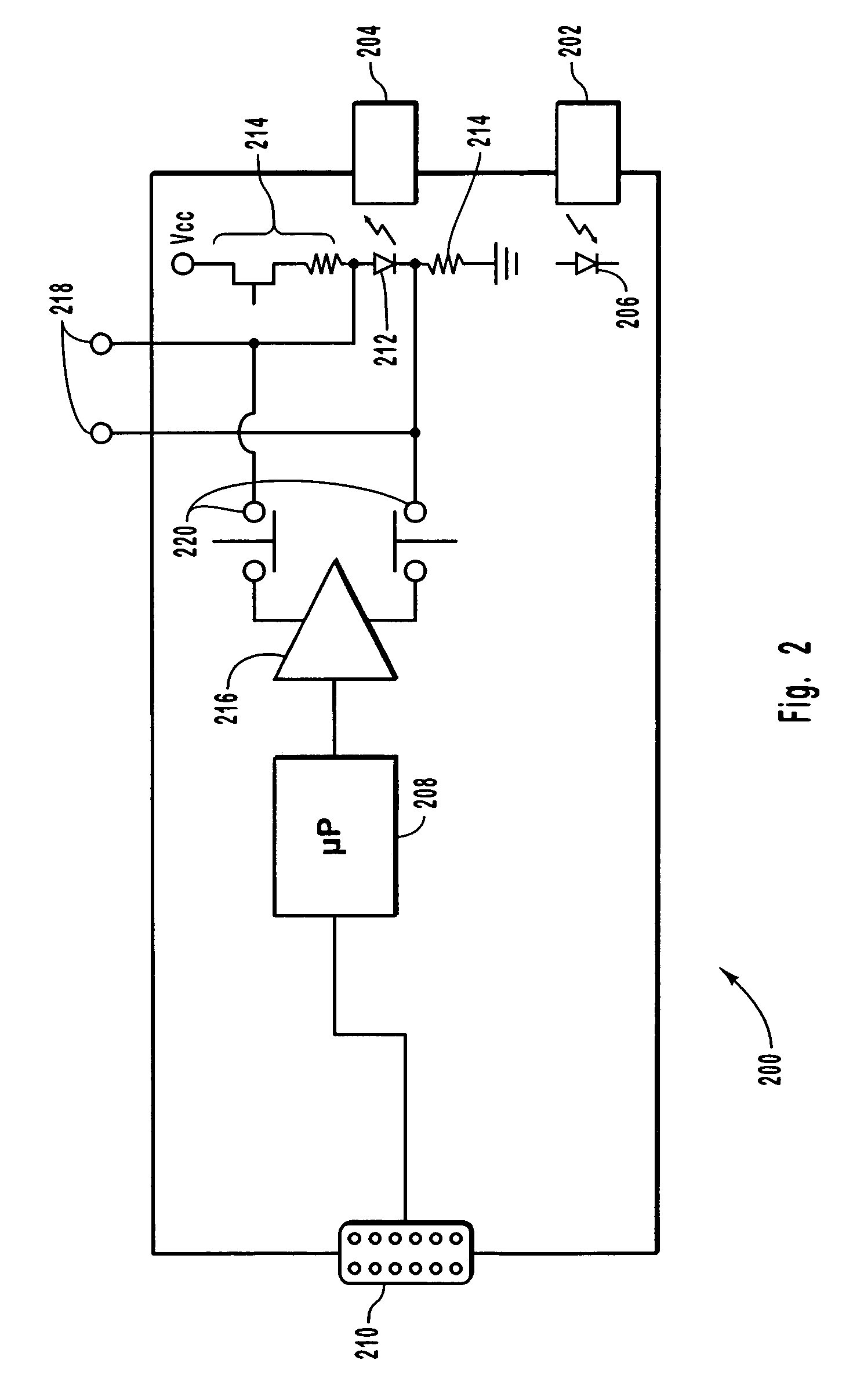Screening optical transceiver modules for electrostatic discharge damage
a technology of optical transceiver and electrostatic discharge, which is applied in the direction of individual semiconductor device testing, testing circuits, instruments, etc., can solve the problems of being very susceptible to electrostatic discharge damage, general much more difficult than electrical communication, and affecting the performance of optical transceiver modules
- Summary
- Abstract
- Description
- Claims
- Application Information
AI Technical Summary
Benefits of technology
Problems solved by technology
Method used
Image
Examples
Embodiment Construction
[0019]Embodiments of the present invention provide apparatus for testing a laser diode including oxide VCSELs, which have been installed in transceivers, over time to determine if damage has occurred to the laser diode. One embodiment of the invention allows for the laser diode to be separated from other circuitry such that test equipment can be attached to the laser diode. An operating characteristic such as current / voltage characteristics or current versus optical power characteristics of the laser diode can be measured and recorded for comparison with subsequent measurements or a reference measurement. In another embodiment of the invention, a laser driver in the transceiver includes circuitry for measuring current / voltage, current versus power and / or other characteristics of the laser diode. The measured characteristics may be stored in memory on the transceiver for comparison, with subsequent measurements or a reference measurement. The comparison may be accomplished by using a...
PUM
 Login to View More
Login to View More Abstract
Description
Claims
Application Information
 Login to View More
Login to View More - R&D
- Intellectual Property
- Life Sciences
- Materials
- Tech Scout
- Unparalleled Data Quality
- Higher Quality Content
- 60% Fewer Hallucinations
Browse by: Latest US Patents, China's latest patents, Technical Efficacy Thesaurus, Application Domain, Technology Topic, Popular Technical Reports.
© 2025 PatSnap. All rights reserved.Legal|Privacy policy|Modern Slavery Act Transparency Statement|Sitemap|About US| Contact US: help@patsnap.com



